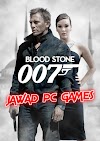--Frantz Fanon, The Wretched of the Earth p. 44 (trans. Richard Philcox)
"Why make images? Why not be satisfied with embracing reality? Experimental films have often formulated and more often answered this fundamental question in art. Cinema is not necessarily an echo chamber (Jean-Luc Godard's "damsel of recording"). It can be an act; it can become a weapon; it can even get lost in combat. Consider René Vautier's sublime works: designed like missiles to destroy the enemy (capitalist exploitation, to be brief, especially in its colonial forms), they burst into flames, they get blown to bits in mid-air (shots from Vautier's films constantly reappear throughout militant cinema); or else, having accomplished their mission and self-destructed, the work merges into its own concrete historical effects. It would be useful to study the history of forms that brought about militant practices in cinema, whether they came from direct intervention (René Vautier, Chris Marker, the constellation of collectives that blossomed at the end of the '60s, Bruno Muel, Dominique Dubosc...) or from a more classic activity such as pamphlet writing, a struggle against a state of affairs, beliefs or even the image itself (certain cool-headed films superimpose these three targets, including masterpieces by Maurice Lemaître, Marcel Hanoun, the Dziga Vertov group, Djouhra Abouda and Alain Bonnamy, Dominique Avron and Jean-Bernard Brunet). Making images nobody wants to see, offering images for things that don't have any, going even farther than transgression or subversion, experimental cinema confronts the unacceptable, be it political, existential, ideological or sexual. Even these purely nominal distinctions would be obliterated, first by underground cinema, for one (Etienne O'Leary, Jean-Pierre Bouyxou, Philipe Bordier, Pierre Clémenti...), and later by individual personalities like Lionel Soukaz."
--Nicole Brenez, "Jeune, dure et pure!"
I'm going back to work on a paper I drafted months ago about "aggressive" form and figural violence in cinema. It requires an understanding of cinema as action and not simply as reflection, representation, or expression. One of the hardest parts is how to clearly and adequately convey the importance of historical context in any of this, i.e., there is no free-and-easy theory here to just lay across the use of 'violent cinema,' if there's a theory at all its that time & place render such a thing incredibly malleable. Hence, the Noël Burch paragraph I love so much that indicates that avant-garde flicker films in the 1960s (which are some kinds of films a lot of non-cinephiles and non-film scholars tend to simply overlook, to their loss, when discussing this medium & modernism) were a deliberate aesthetic reclamation of certain unsavory motion picture side effects from 50+ years before, and the movement from a working class tolerance of headache-inducing flickers into a middle-class embrace of the same effects put to an intentional, artistic purpose. (I absolutely love these flicker films--Arnulf Rainer, The Flicker, Paul Sharits--though one can also only take so much...) In effect the violence becomes nullified even as the technique is amped up, though not because the technique is amplified, but because of who is producing and consuming the work, and why they are doing so--what context they're doing it in. A consideration of environment is necessary, because while headaches (and possibly epileptic seizures) may result from intense flicker, the flicker films may not actually be very "violent" at all, when it comes down to it. Reading some of Sharits own writing on his work and his opinions on film pedagogy, violence doesn't seem to come into it; the challenge of his work is not so much about attaining mastery through trial as it is finding an almost buddhist sense of acceptance. So evaluating, praising, criticizing (say) a flicker film involves us being diligent about the actual circumstances of the form; we can't really say it subverts our sense of vision or the cinematic experience when small and educated audiences were voluntarily seeing these films that consciously utilized a more-or-less outdated (and previously unintentional) "technique" of the cinema. This is not to say, however, that cinema cannot be actually violent, cannot play a role that is disruptive or genuinely aggressive; again, it comes down to the circumstances of production and use. The Vautier missile ...
And so on. More on cinema & violence in the future.








0 Comments